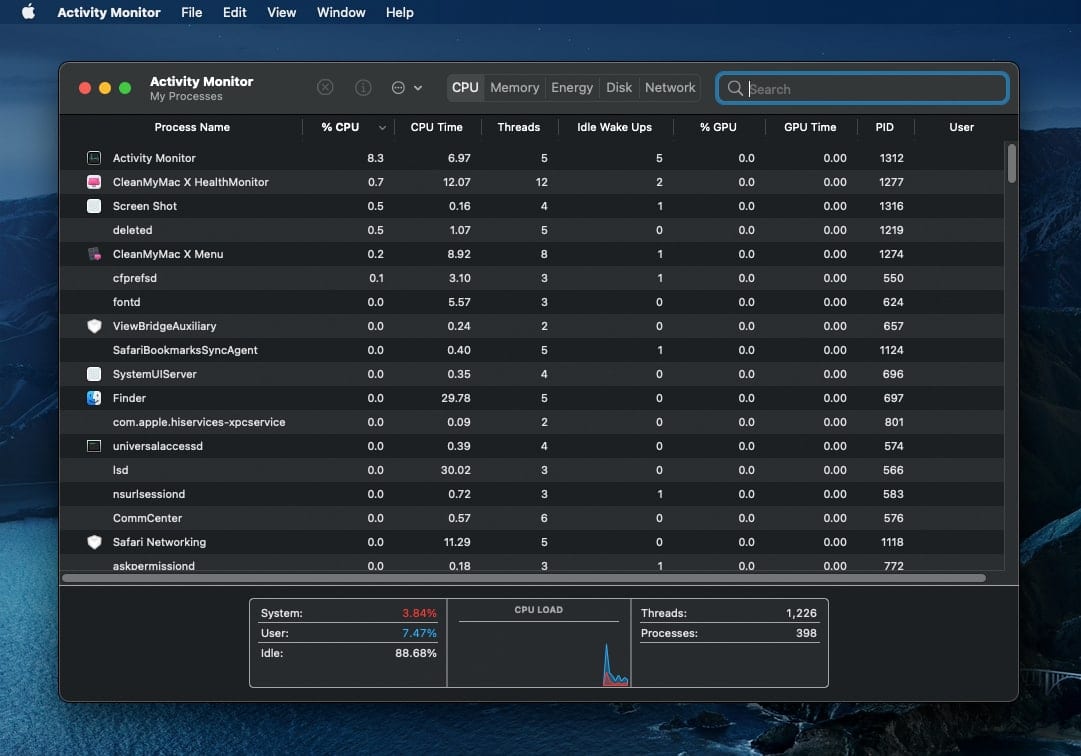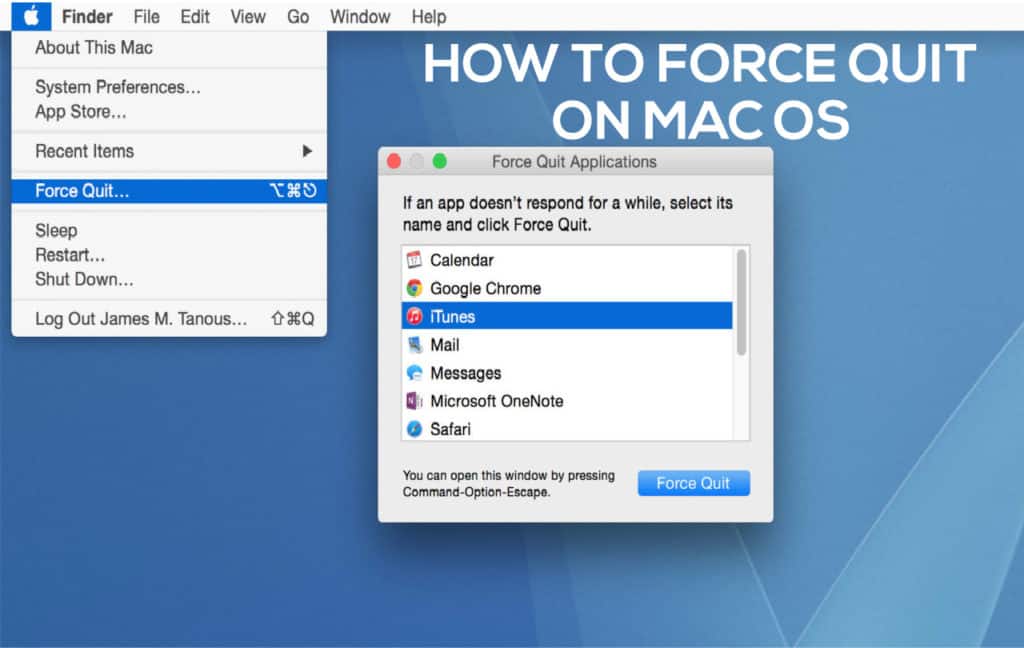
- #Osx shortcut to force quit how to#
- #Osx shortcut to force quit free#
- #Osx shortcut to force quit mac#
Select the program you want to quit from. Do the following: Press and hold the following keys: Command + Option + Esc.
#Osx shortcut to force quit mac#
Alternatively, you can use a force quit Mac shortcut to close an unresponsive app. As simple as that! Force quit using the keyboard shortcut. Hold an Option (Alt) button, so the Quit menu changes to Force Quit. The Alt + F4 keyboard shortcut can force a program to quit when the program’s window is. When a program freezes up or does not respond for a long while and the X button does not work, you can try to force it to quit by pressing the Alt + F4 key on your physical keyboard. Way 1: Force an unresponsive program to quit using keyboard shortcut. Select the frozen application from the dialogue box and select “Force Quit.”. It will immediately bring up a “Force Quit Application” window. On your keyboard, press and hold Command + Option + Esc. To do the same thing but faster, use Mac shortcut keys to close frozen applications. Select the app in the Force Quit window, then click Force Quit. Or choose Force Quit from the Apple ( ) menu in the upper-left corner of your screen. This works perfectly 99 of the time and is a fast way to force quit on Mac if you can remember it. If it is unresponsive, it should say ‘Not responding’ next to it. This is similar to pressing Control-Alt-Delete on a PC. Press Command + Alt + Esc all at once to bring up the running app list. Press these three keys together: Option, Command, and Esc (Escape). Click on the application you want to shut down. The Force Quit controls window will open. Press the command, option, and esc keys at the same time. This technique is especially useful if you notice your mouse cursor is experiencing a lot of lag in response time.
#Osx shortcut to force quit how to#
Whatever the reason is, here is how to force quit on Mac when frozen Finder won't work correctly and how to stop Finder from using an app or external hard disk.How to force quit an app using the keyboard shortcut. If the word indexing shows up while you search with Spotlight, you know it's the culprit.Ĭorrupt system preferences and frozen applications are also likely rendering Finder not responding on Mac.


Spotlight indexing may also cause Finder to crash or work slowly. It often occurs after updating macOS or transferring many files to the Mac.
#Osx shortcut to force quit free#
If Finder not responding happens frequently, you need to free up space on Macintosh HD. There are a few reasons causing Finder to act slow or not work well on Mac.įinder slows down when your Mac is running out of memory or storage. It's recommended to always have 20% of your Mac's storage available for running applications. Keep reading to find out how to quit Finder on Mac. Note that after stopping Finder action, it will be automatically relaunched as it runs with the system. You'll also want to relaunch Finder after changing preferences. But when Finder becomes slow or unresponsive or secretly using an app/disk that you want to exit, quitting it and letting macOS restart Finder is the fix. As simple as that Force quit using the keyboard shortcut Alternatively, you can use a force quit Mac shortcut to close an unresponsive app.

Usually, there's no need to quit Finder if it runs well. To open the dock menu, right-click on the application icon you want to shut down or click on the item and hold. FAQ about how to stop Finder action on MacĪlthough there's no Quit button for Finder, you still can quit Mac Finder and restart it. Way 5: Stop Finder action on Mac with Terminal Way 4: Force quit Finder with Activity Monitor Way 2: Force quit Finder from the Apple menu Way 1: Stop Finder action on Mac with the keyboard shortcut

But the question is, can you quit Finder? There is a reasonable solution to all these issues: stop the Finder action and relaunch it. What troubles have you gone through with Finder, the default Mac file manager? For some, Finder always refuses to eject a disk but pops up the error message - "The disk couldn't be ejected because Finder is using it." For others, Finder won't relaunch or may become unresponsive or slow.


 0 kommentar(er)
0 kommentar(er)
